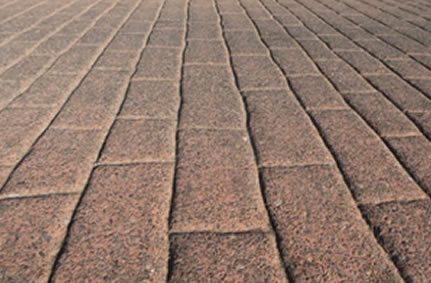If your pavers are no longer held in place tightly, you must think about what you can do to stop your pavers from shifting. While a well-designed paver system can prove to be a beautiful addition to your property, you might face problems if it is not installed correctly. Here are the most common problems that homeowners often run into with improperly installed pavers.

Pavers Are at Different Levels
While certain pavers appear to have sunk deep into the ground, others may seem to be sticking out higher than the rest. When installation is not done correctly, you may end up with uneven pavers.
You should first consider what kind of soil is underneath the pavers. It the soil has a large water retention capability, then there may be problems during the winter months since the water held in the soil will expand on freezing. This expansion may raise some of your pavers higher than the others.
Stone dust is another material that can hold a lot of water and cause such problems. Therefore, when you start constructing your paver system, you should use processed gravel since it serves as a stable base for your pavers.
Pavers Are Shifting from Their Positions
You may notice that the pavers are drifting away slowly from their positions. Such a problem often arises because of the lack of edge restraint. The edge restraint is an installation around the paver periphery to keep them packed tightly together. When this edge is damaged or missing, the pavers will have no restraining force to hold them securely in place. Hence, they will start moving.
Therefore, you should inspect the perimeter of your pavers to find out where the edging restraint is either damaged or missing.
Another problem with damaged or missing perimeters is that the pavers may start protruding outwards. This obviously is a dangerous condition since people can trip and fall over such pavers.
You can build edging from metal, plastic or cement. Plastic has the advantage that it is resistant to adverse weather and the elements.
Once you have laid out the base, pavers and edging restraints, you should fill up the cracks between pavers by sweeping polymeric or concrete sand into them. At the end, you should drive a compactor over your pavers to keep everything smooth and level.
The Best Solution
Fixing such problems requires proficiency and expertise. You can get in touch with our experts to accomplish all tasks related to pavers like installation, repair, sealing and maintenance. You can count on us to save your time and money. If you are interested in pavers that are built to last then look no further.
